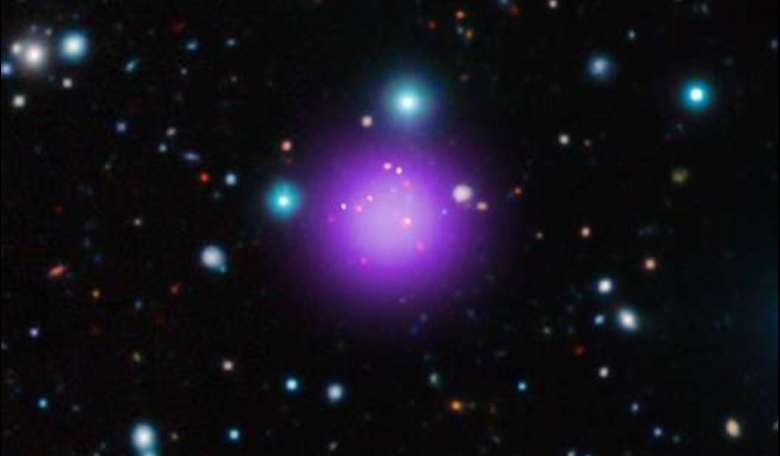A record-breaking discovery was
announced on August 30
th - the discovery of galaxy cluster CL J1001+0220 (CL
J1001 for short) by NASA's Chandra X-ray
observatory and other telescopes.
The cluster is located about 11.1 billion light years
from Earth. Researchers may have caught it right after birth, which
would make this the first time a galaxy cluster's brief birth stage
has been seen by us on Earth. The discovery may also push back the
formation time of galaxy clusters by about 700 million years.
According to Tao Wang of the French Alternative Energies and Atomic
Energy Commission (CEA) who led the study, "This galaxy cluster
isn't just remarkable for its distance, it's also going through an
amazing growth spurt unlike any we've ever seen.”
Galaxy clusters are the largest known gravitationally bound structures in the universe. A cluster can contain anywhere between tens to thousands of galaxies, bound together by gravity. In this case, there are eleven massive galaxies at the core of CL J1001, with nine of them going through rapid star formation. Stars are forming at a rate equivalent to over 3,000 Suns forming per year – an incredibly high rate for a young cluster such as CLJ1001. "It appears that we have captured this galaxy cluster at a critical stage just as it has shifted from a loose collection of galaxies into a young, but fully formed galaxy cluster," said co-author David Elbaz from CEA.
Until now, only protoclusters – loose collections of galaxies – have been recorded farther away than the CL J1001, making this cluster the earliest example of a gravitationally bound cluster.
The result is based on data from a
large group of observatories in space and on the ground including
Chandra, NASA's Hubble Space Telescope and Spitzer Space Telescope,
ESA's XMM-Newton and Herschel Space Observatory, the NSF's Karl G.
Jansky Very Large Array, the Atacama Large Millimeter/submillimeter
Array (ALMA), the Institut de Radioastronomie Millimetrique Northern
Extended Millimeter Array (IRAM NOEMA), and ESO's Very Large
Telescope.
Speaking about the importance of this record-breaking discovery, study co-author Alexis Finoguenov of the University of Helsinki in Finland said, “We think we're going to learn a lot about the formation of clusters and the galaxies they contain by studying this object, and we’re going to be searching hard for other examples."
The full study results were published online in The Astrophysical Journal.











